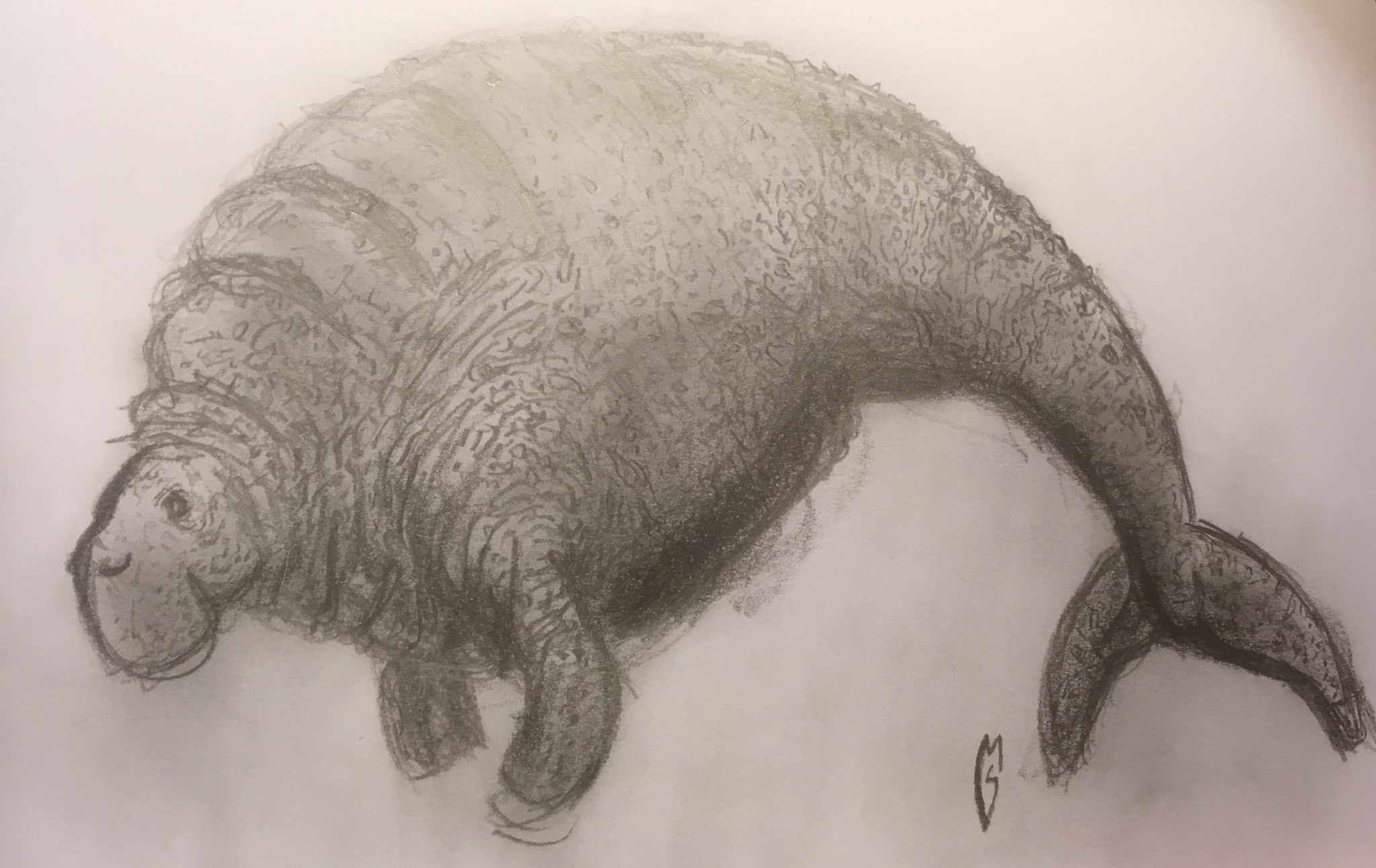In response to species extinctions resulting from human activity, Remembrance Day for Lost Species (RDLS), November 30th, is a chance each year to explore the stories of extinct species. These lead to stories of critically endangered species, cultures, ways of life, and ecological communities. RDLS is an opportunity to make or renew commitments to all who remain, and to collaborate on creative and practical solutions. The primary intention of the day is to provide spaces for reflection. Previous activities have included art, processions, tree planting, building Life Cairns and more. See the RDLS website for some examples of last year’s events.
For 2018, RDLS invites events on or around November 30th to mark the extinction and endangerment of marine species and/or the ongoing threats to seas. The focal lost species for 2018 is Steller’s sea cow. Alternatively, RDLS participants are welcome to focus on any lost or disappearing species or ecological community. Please see the list of suggested activities below.
Steller’s sea cow
Steller’s sea cow (Hydrodamalis gigas) was a large marine mammal whose living relatives are the dugong and the manatee. Steller’s sea cow was last seen in 1768 in the Bering Sea between Alaska and Russia: 2018 marks the 250th anniversary of its extinction, just a few years after it was first observed and named by Europeans. The story of Steller’s sea cow story has much to teach about how species can be extinguished with shocking speed.
Steller’s sea cow was named after Georg Wilhelm Steller, a German naturalist who noticed the creatures whilst shipwrecked on Bering Island during a scientific mapping expedition of the Arctic. Much of what is known about the sea cow comes from Steller’s 1741 observations. Fur hunters who set up a trading post on the island then subsisted on sea cows, which were easy to hunt as they were slow moving and tended to stay near the surface of the water. All the sea cows were gone by 1768, just 27 years after Steller named the species.
Growing up to nine metres in length and weighing up to ten tonnes, Steller’s sea cows provided refuge for many species, including fish, several species of crustaceans now extinct, and resting birds, since they rarely submerged fully. They communicated with sighs and snorts, fed mainly on kelp, and were monogamous and sociable. Mothers nursed and raised one baby at a time.
Suggested RDLS activities:
- Respond to the story of Steller’s sea cow or focus on the story of another marine species, community or issue you’re passionate about. Other examples include grey whales, orcas, vaquita, eels, krill, otters, salmon and many more.
- Focus on local stories of extinction or endangerment, and on ways to restore relationship with one or more species of your ecological community. Make links with the plight of marine species.
- Explore the links between environmental violence and violence to people. Bridge these stories with those of marine species.
- For practical solutions without obscuring the focus of the day itself, organise or participate in personally and collectively restorative activities (e.g. beach and waterway cleans, tree planting, gardening with pollinators and soil in mind) on the days around RDLS. For example, the first of Lucille’s Regenerative Memorials was dedicated on November 30th, 2017.
Let us know if you hold an event, and we can help promote it. Please document it and share any images, text etc with us via twitter or instagram @lostspeciesday. Email us at . We also welcome blog contributions, including extinction related stories, visual art, poetry, historical accounts etc. Facebook: https://www.facebook.com/internationalremembrancedayforlostspecies/

—
Share on Twitter /
Share on Facebook
Posted on June 26, 2018
Categories: Opportunities
Tags: 2018
→ JACOB V JOYCE: Starting a conversation
← Artists In residence: HOAX
